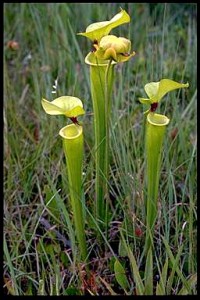While common name is so much easier for us to use, there are several good reasons for us to use botanical names for plant identification.
Botanical Name – Unique to Only One Plant
Every plant has at least one unique botanical name (or scientific name or Latin name) to it. This means that every botanical name refers to one and only one plant. Some plants may have more than one botanical name, yet this is not very common. To avoid confusion, it is better to use botanical name for plant identification.
Common Name – Commonly Used by Many Plants
On the other hand, many common names are not unique to a specific plant. Different species of plants (plants that might not even be related) may have the same common name. For examples, many plants are commonly called tumbleweed, or generally called as moss or daisies. In the world of carnivorous plants, both Sarracenia and Darlingtonia are called cobra lilies, and there are about eight different species of Sarracenia called trumpet pitcher plants.
Botanical Name – Solve Language Problem
Gardeners of different countries have different set of common names for the plants. Due to the difference in language and culture, it could be very difficult for a Chinese gardener to share her horticulture experience of some particular species with a gardener in Florence, if all the Chinese gardener knows is the Chinese common name of the plants.
Common Name – Some Plants Don’t Have a Common Name
Some plants that are not so common to begin with, don’t have any common name for plant identification.
 Botanical Name – Give Hints of Genus and Species of Plants
Botanical Name – Give Hints of Genus and Species of Plants
While the common name – trumpet pitcher – gives us no hint of how the plant looks like, the botanical name of the plant does. The botanical name of a plant is composed of two major parts, the genus and the species of the plant. So, if we know the botanical name of the plant is Sarracenia flava, we will know that the plant is a carnivorous plant in the genus of Sarracenia (see the photo here).
Check this post that helps you to understand botanical plant names for plant identification.



Recent Comments